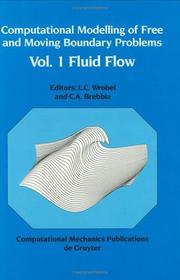| Listing 1 - 4 of 4 |
Sort by
|
Book
ISBN: 1281861812 9786611861810 3540684778 3540684697 3642088023 Year: 2008 Publisher: Berlin : Springer,
Abstract | Keywords | Export | Availability | Bookmark
 Loading...
Loading...Choose an application
- Reference Manager
- EndNote
- RefWorks (Direct export to RefWorks)
There has been a long debate about whether uniformly accelerated charges should radiate electromagnetic energy and how one should describe their worldline through a flat spacetime, i.e., whether the Lorentz-Dirac equation is right. There are related questions in curved spacetimes, e.g., do different varieties of equivalence principle apply to charged particles, and can a static charge in a static spacetime radiate electromagnetic energy? The problems with the LD equation in flat spacetime are spelt out in some detail here, and its extension to curved spacetime is discussed. Different equivalence principles are compared and some vindicated. The key papers are discussed in detail and many of their conclusions are significantly revised by the present solution.
Particle acceleration. --- Dirac equation. --- Differential equations, Partial --- Quantum field theory --- Wave equation --- Particles (Nuclear physics) --- Acceleration (Mechanics) --- Nuclear physics --- Acceleration --- Particle and Nuclear Physics. --- Classical and Quantum Gravitation, Relativity Theory. --- Theoretical, Mathematical and Computational Physics. --- Classical Electrodynamics. --- Nuclear physics. --- Gravitation. --- Mathematical physics. --- Optics. --- Electrodynamics. --- Dynamics --- Physics --- Light --- Physical mathematics --- Field theory (Physics) --- Matter --- Antigravity --- Centrifugal force --- Relativity (Physics) --- Atomic nuclei --- Atoms, Nuclei of --- Nucleus of the atom --- Mathematics --- Properties
Book
ISBN: 364204784X 9786613559906 3642047858 128038199X Year: 2010 Publisher: Berlin ; Heidelberg : Springer-Verlag,
Abstract | Keywords | Export | Availability | Bookmark
 Loading...
Loading...Choose an application
- Reference Manager
- EndNote
- RefWorks (Direct export to RefWorks)
The vast majority of particles in particle physics are today considered to be bound states of other particles. All forms of binding energy and kinetic energy in such a state have to be included in its inertial mass. This book revives the classical explanation for this in the case of electromagnetic interactions. But it is also a reminder of the many benefits of this classical understanding that are simply dropped in modern accounts of inertia. This is a book for the motivated student who feels it is useful to remember where our theories come from. There is also a comprehensive overview of the state of the art in particle physics.
Particles (Nuclear physics) --- Inertia (Mechanics) --- Physics --- Physical Sciences & Mathematics --- Nuclear Physics --- Electricity & Magnetism --- Light & Optics --- Acceleration (Mechanics) --- Acceleration, Negative --- Deceleration --- Physics. --- Gravitation. --- Optics. --- Electrodynamics. --- Nuclear physics. --- Optics and Electrodynamics. --- Classical and Quantum Gravitation, Relativity Theory. --- Particle and Nuclear Physics. --- Theoretical, Mathematical and Computational Physics. --- Mechanics --- Motion --- Speed --- Artificial gravity --- Mass (Physics) --- Classical Electrodynamics. --- Mathematical physics. --- Physical mathematics --- Atomic nuclei --- Atoms, Nuclei of --- Nucleus of the atom --- Field theory (Physics) --- Matter --- Antigravity --- Centrifugal force --- Relativity (Physics) --- Dynamics --- Light --- Mathematics --- Properties
Book
ISBN: 3642218148 3642218156 9786613577689 1280399767 Year: 2012 Publisher: New York : Springer,
Abstract | Keywords | Export | Availability | Bookmark
 Loading...
Loading...Choose an application
- Reference Manager
- EndNote
- RefWorks (Direct export to RefWorks)
This is the updated, widely revised, restructured and expanded third edition of Léna et al.'s successful work Observational Astrophysics. It presents a synthesis on tools and methods of observational astrophysics of the early 21st century. Written specifically for astrophysicists and graduate students, this textbook focuses on fundamental and sometimes practical limitations on the ultimate performance that an astronomical system may reach, rather than presenting particular systems in detail. In little more than a decade there has been extraordinary progress in imaging and detection technologies, in the fields of adaptive optics, optical interferometry, in the sub-millimetre waveband, observation of neutrinos, discovery of exoplanets, to name but a few examples. The work deals with ground-based and space-based astronomy and their respective fields. And it also presents the ambitious concepts behind space missions aimed for the next decades. Avoiding particulars, it covers the whole of the electromagnetic spectrum, and provides an introduction to the new forms of astronomy becoming possible with gravitational waves and neutrinos. It also treats numerical aspects of observational astrophysics: signal processing, astronomical databases and virtual observatories.
Astronomical instruments. --- Astronomy -- Observations. --- Astrophysics -- Observations. --- Astrophysics --- Astronomy --- Astronomical instruments --- Astronomy & Astrophysics --- Physical Sciences & Mathematics --- Instruments, Astronomical --- Astronomical observations --- Observations, Astronomical --- Astronomical physics --- Instruments --- Physics. --- Astrophysics. --- Microwaves. --- Optical engineering. --- Astrophysics and Astroparticles. --- Microwaves, RF and Optical Engineering. --- Signal, Image and Speech Processing. --- Optical instruments --- Physical instruments --- Scientific apparatus and instruments --- Space optics --- Cosmic physics --- Physics --- Hertzian waves --- Electric waves --- Electromagnetic waves --- Geomagnetic micropulsations --- Radio waves --- Shortwave radio --- Signal processing. --- Image processing. --- Speech processing systems. --- Computational linguistics --- Electronic systems --- Information theory --- Modulation theory --- Oral communication --- Speech --- Telecommunication --- Singing voice synthesizers --- Pictorial data processing --- Picture processing --- Processing, Image --- Imaging systems --- Optical data processing --- Processing, Signal --- Information measurement --- Signal theory (Telecommunication) --- Mechanical engineering


ISBN: 9783110871906 9783110131727 Year: 2016 Publisher: Berlin ;; Boston De Gruyter
Abstract | Keywords | Export | Availability | Bookmark
 Loading...
Loading...Choose an application
- Reference Manager
- EndNote
- RefWorks (Direct export to RefWorks)
| Listing 1 - 4 of 4 |
Sort by
|

 Search
Search Feedback
Feedback About UniCat
About UniCat  Help
Help News
News